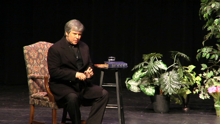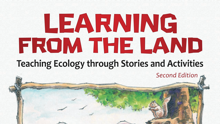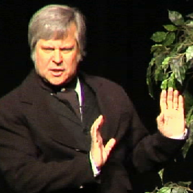Area storyteller prepares one-man show on the famous scientist with ties to Illinois entomologist
Sunday, June 10, 2007
By GARY PANETTA of the Peoria Journal Star
By GARY PANETTA of the Peoria Journal Star
Benjamin D. Walsh lived the way he died - too busy oohing and ahhing over a rare beetle to hear a train barrelling toward him on the tracks near Rockford.
But the native of Great Britain - and later a Henry County farmer and Illinois' state entomologist - secured himself a minor footnote in history by also being one of the many scientists worldwide in correspondence with Charles Darwin.
That's one of the historical tidbits in "Charles Darwin in Person," a one-man show created by central Illinois storyteller Brian "Fox" Ellis. The one-man show opens next weekend at Chicago's Field Museum of Natural History as part of a major new exhibition about Charles Darwin and the theory of evolution. The exhibit, which runs June 15 through Jan. 1, 2008, brings together interactive displays, manuscripts, letters and hundreds of scientific specimens - everything from delicate orchids to live horned frogs - to help visitors understand how Darwin came to formulate the theory of evolution by natural selection.
Walsh (1809-1869) was born in Great Britain and later moved to Illinois as a homesteader. He spent most of his life as a farmer in Henry County, but continued his study of insects. Walsh's massive collection of insects - unfortunately destroyed in the Great Chicago Fire of 1871 - led the Illinois legislature to appoint him the state's official entomologist in 1869. Then living in Rockford, Walsh was struck and killed by a train, which he didn't hear coming because he was too busy studying a rare beetle.
"They may have known each other in college," Ellis said of Walsh and Darwin. "Darwin, in the letters, is kind of vague about that - as if, and this is my interpretation, Darwin doesn't really remember him."
After Darwin's historic five-year journey on the HMS Beagle, which led him to formulate the modern theory of evolution, he spent the rest of his life developing and substantiating his ideas.
"When he came back to England, he hardly left his house," Ellis said. "So for 30 years, as he's working on this great body of research, he traded letters with scientists all over the world who sent him specimens to allow him to continue doing his research without leaving his study. He really nurtured relationships with younger scientists all over the planet. He collected specimens as far away as Malaysia and the Illinois River Valley."
The Illinois entomologist is actually only a small part of Ellis's presentation, which provides a colorful look at Darwin - the man - as well as his ideas about evolution and natural selection.
One of Ellis' favorite anecdotes about Darwin takes place while the scientist was still a young man and collecting beetles near Edinburgh. Spotting an unusual beetle, Darwin snatched it with his right hand. Seeing a second beetle, he snatched it with his left. Then he spotted a third beetle on a tree in front of him. Not knowing what to do, he popped one of the beetles in his mouth and grabbed the third one - which he promptly dropped after the beetle in his mouth sprayed an acrid fluid.
"It's a funny little story, but it illuminates the idea that even as a young man he was fascinated by the diversity of species," Ellis said.
Darwin initially had hoped to become a doctor, but he observed a child receiving an operation without anesthesia and it horrified him. He chose to become a divinity student instead, but theological studies didn't suit him. Then came an opportunity to serve as an unpaid naturalist on the HMS Beagle, which was planning an exploration of the east and west coasts of South America and the Pacific Islands.
The 22-year-old Darwin hoped that the voyage would be a "second birth." Indeed, the young naturalist found his calling as a scientist. And as Darwin probed the geological and zoological oddities of a distant continent - marine fossils at altitudes of 12,000 feet in the Andes, giant ostriches (rheas) on the pampas of Argentina, birds and tortoises of the Galapagos Islands - he came to doubt the traditional view that animal species, including human beings, were fixed and unchanging.
These views were later elaborated in "On the Origin of Species by Means of Natural Selection, or The Preservation of Favoured Races in the Struggle for Life," published in 1859.
Although now accepted by most biologists, Darwin's ideas generated controversy, including in the United States where some scientists attacked his ideas. Walsh was not among them.
"He was one of Darwin's supporters in the scientific community in America," Ellis said. "There were a couple of American scientists who really attacked Darwin. Walsh was someone who wrote scientific articles - using Walsh's own research to affirm some of Darwin's foundational theories."
Gary Panetta can be reached at 686-3132 or gpanetta @pjstar.com









